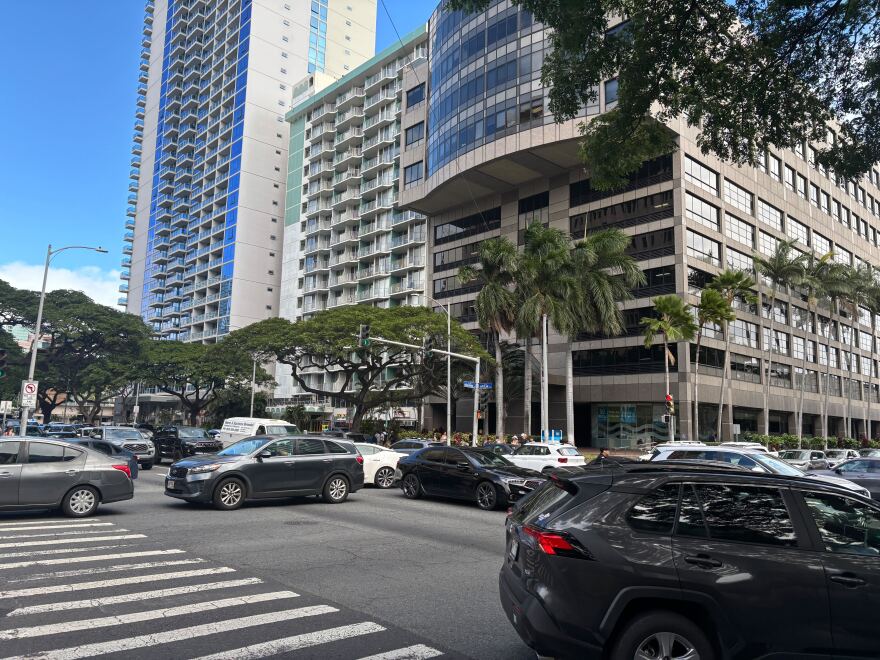In the countdown to this week’s tsunami, thousands of motorists were stuck in gridlock.
At a news conference on Wednesday, state Department of Transportation Director Ed Sniffen told reporters about the delicate dance of traffic management.
“At Joint Traffic Management Center, it's connected to most of the signals on Oʻahu, so we could real-time adjust them,” Sniffen said during the conference.
“Because we had the city, the state and all emergency responders sitting together, we could see the traffic buildup in different areas. We could change the signals and see how it affected that traffic buildup in different portions, and see if we had to actually send police officers out there to ensure that we could push things further.”

Honolulu Transportation Services Director Roger Morton talked with The Conversation on Thursday morning about what — if anything — could have been done to ease the congestion and stress of drivers on the roads.
He, along with state transportation and emergency management officials, is to follow up on ways to improve messaging to help take the pressure off our roadways and highways.
“If you're in a safe place, stay in your safe place, if you can,” he said, about future messaging. “Now, I get it that people have real lives and they have children and they have other things, and so not everybody can do that, but if you can, particularly with this type of event that's a few hours away, that's better than just jamming up our freeways.”
Morton added that anyone in buildings above the fourth floor was in a safe place — staying there keeps you safe, but also keeps roadways available for those who are not safe.
“Even the H-1 Freeway, it was gridlocked. It wasn't moving,” Morton said. “And when it's not like that, I mean, the lane of travel on the H-1 can handle 2,000 cars an hour, but if it's gridlock, that capacity is going to go way down. And that's what occurred."
TheBus continued service for the remainder of the afternoon, but stopped at 6 p.m. Morton said that meant there were about 65 buses with people on them who had to evacuate to a different place, a district park or a high school.
TheHandi-Van office also provided shelter for people during the height of the event — and Skyline operated until its last rail trip arrived around 7 p.m.
“There's a lot of lessons learned,” Morton said. “As painful as it was, it was a full-scale exercise for city and state emergency responders to try to cope with that, and traffic, obviously, is the one area that has been frustrating to people."
"But we've got to just get to that point where we understand that I could turn the lights on green 100% of the time, but if the car can't get through the intersection because of the congestion... the issue is the roadways and the highways don't have the capacity to deal with a surge of demand all at one time.”
This story aired on The Conversation on July 31, 2025. The Conversation airs weekdays at 11 a.m. Hannah Kaʻiulani Coburn adapted this story for the web.





